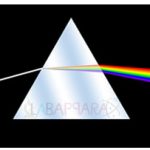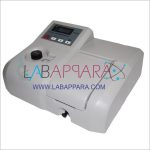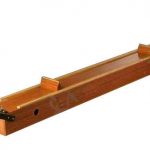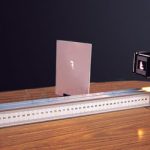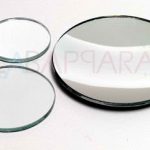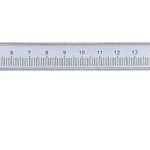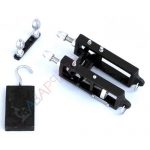Analytical Laboratory Equipment
Showing 33–45 of 45 results
Single Beam UV-VIS Spectrophotometer
Single Beam UV-VIS Spectrophotometer – Analytical Laboratory Equipment Range 200-1000 nm with facility for Automatic single beam uv-vis spectrophotometer. Concentration, % Transmission and absorbency Measurement. Wavelength resolution 5nm 3 and half digit LCD display With cuvettes a set of 1 pair. Cover 195 to 1000 nm, 4 Position Cuvette Holder RS232C Computer Interface. Highly Accurate … Continue reading “Single Beam UV-VIS Spectrophotometer”
Spectrometer- Prism
Spectrometer- Prism Our Objective: (i) To study the angle of deviation (d) with angle of incidence (i) and to find the angle of minimum deviation (D) from i-d curve. (ii) To find the refractive index of the material of the prism using A and D. The Theory: Prism A prism is an optical element. It … Continue reading “Spectrometer- Prism”
SPECTROPHOTOMETER
SPECTROPHOTOMETER – Analytical Laboratory Equipment A spectrometer is an instrument that measures the amount of photons (the intensity of light) absorbed after it passes through sample solution. Features: Rugged structure Resistance to corrosion Accurate reading Water proof Details: Cover 195 to 1000nm 4 Position Cuvette Holder RS-232C Computer Interface High wavelength Precision Highly Accurate & … Continue reading “SPECTROPHOTOMETER”
Spherometer Experiment
Objective Our objectives are; To determine the thickness of a glass plate using a spherometer. To determine the radius of curvature of a given spherical surface using a spherometer. Theory A spherometer works on the principle of the micrometer screw. It is used to measure either very small thickness of flat materials like glass or … Continue reading “Spherometer Experiment”
To determine the frequency of alternating current using a sonometer.
To determine the frequency of alternating current using a sonometer. AC Sonometer: A sonometer is an apparatus used to study the transverse vibrations of stretched strings. It is in the form of a hollow wooden rectangular box. On the wooden rectangular box there are two bridges and a pulley at one end. A wire string … Continue reading “To determine the frequency of alternating current using a sonometer.”
To draw the reverse characteristic curve of a Zener diode and to find its reverse breakdown voltage.
To draw the reverse characteristic curve of a Zener diode and to find its reverse breakdown voltage. Our Objective To draw the reverse characteristic curve of a Zener diode and to find its reverse breakdown voltage. The Theory: Zener diode A Zener diode is a heavily doped silicon crystal diode which allows current to flow … Continue reading “To draw the reverse characteristic curve of a Zener diode and to find its reverse breakdown voltage.”
To find the focal length of a convex mirror using a convex lens.
Convex Mirror – Focal Length: The Theory: Convex mirror A convex mirror is a curved mirror in which the reflecting surface bulges towards the light source. Convex mirrors reflect light outwards; therefore they are not used to focus light. A convex mirror is also known as fish eye mirror or diverging mirror. The image formed … Continue reading “To find the focal length of a convex mirror using a convex lens.”
To find the focal length of the given concave mirror by
The Concave mirror – u-v method: Spherical mirrors It is a mirror which has the shape of a piece cut out of a spherical surface. Two types of spherical mirrors are; Concave mirror: Its inner concave surface reflects, and has polished outer surface. Convex mirror: Its outer convex surface reflects, and has polished inner surface. … Continue reading “To find the focal length of the given concave mirror by”
To know the use of the Vernier Calipers
To know the use of the Vernier Calipers Our Objective To know the use of the Vernier Calipers. To measure the diameter of a small spherical / cylindrical body. To measure the length, width and height of the given rectangular block. To measure the internal diameter and depth of a given beaker/calorimeter and hence find … Continue reading “To know the use of the Vernier Calipers”
To study the relationship between force of limiting friction
To study the relationship between force of limiting friction Objective To study the relationship between force of limiting friction and normal reaction. To find the co-efficient of friction between a block and a horizontal surface. Theory When one body makes an attempt to slide over another body, an opposing force called the force of friction … Continue reading “To study the relationship between force of limiting friction”
To study the static characteristic of a transistor (Common Emitter Configuration)
Transistor characteristics: Our Objective: To study the static characteristic of a transistor (Common Emitter Configuration) The Theory: A transistor is a semiconductor device used to amplify or switch electronic signals and electrical power. It is composed of semiconductor material with at least three terminals for connection to an external circuit. A voltage or current applied … Continue reading “To study the static characteristic of a transistor (Common Emitter Configuration)”
To study the variation in volume with pressure for a sample of air at constant temperature by plotting graphs between P and V, and between P and 1/V.
Boyle’s Law: Objective To study the variation in volume with pressure for a sample of air at constant temperature by plotting graphs between P and V, and between P and 1/V. Theory Properties of gases and Gas laws Gaseous state is a state of matter in which the substance does not have any specific shape … Continue reading “To study the variation in volume with pressure for a sample of air at constant temperature by plotting graphs between P and V, and between P and 1/V.”
Young’s modulus Experiment
Young’s modulus Experiment Our Objective Our aim is to determine the Young’s modulus of elasticity of the material of a given wire using Searle’s apparatus. The Theory Before we move ahead, do you know what a Searle’s apparatus is? Searle’s apparatus consists of two metal frames F1 and F2. Each frame has a torsion head … Continue reading “Young’s modulus Experiment”


